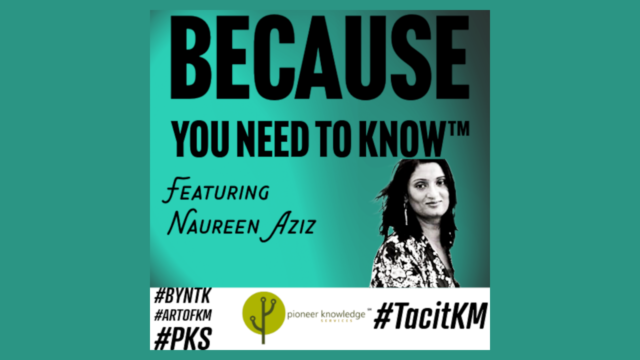
Urban planning, complex systems theory, and contraproductive change
While it has often been stated in management literature that command and control approaches to management are suboptimal, there is surprisingly little discussion about why alternative management methods are better. Articles often use generic terms like “employee mobility”, “business innovation”, and “employee empowerment” without mentioning any impact on profit or revenue. This seems odd. If a CEO is talking about “things that employees value” without explicitly linking them to “what the organisation values”, Stephen Kerr’s discussion on the folly of rewarding A while hoping for B comes to mind. Is there a way to reconcile this apparent disconnect?
One of the more intriguing places to start an exploration of these issues is urban planning theory. This is one of the few areas where professionals have any kind of long-term track record in achieving sustainable systems change. Importantly, the discipline has been self-reflective about its own effectiveness, leading to a branching and evolving set of approaches to its planning approach. Some of the most prominent theories over time include, in rough order of chronology:
- Blueprint planning – pronouncements on “best” design choices that can be applied everywhere
- Synoptic planning – holistic, evidence-based, and adapted to context, but still normative and top-down
- Participatory planning – “traditional” stakeholder consultation to inform centrally planned design
- Incrementalism – rapid feedback loops and small changes to constrain possible impact
- Radical planning – systemic, decentralised, values-based change
- Communicative planning – consensus oriented, multi-stakeholder change.
The most obvious trend seen is the move away from top-down imposition of outcomes and towards collaborative communications and consensus. The experience of urban planners has unequivocally been that paternalistic approaches which presume exclusive access to relevant knowledge produce suboptimal results, Most destructively this was observed seen in the public housing projects-turned-slums built in the 50s and 60s.
This evolution has obvious parallels to many of the challenges facing organisational management and complex systems theory, which in turn raises the question of whether there are lessons from urban planning approaches that can be productively incorporated into the knowledge management (KM) body of knowledge.
For example, it could be said that the well-known KM expert Dave Snowden is a strong advocate of incrementalism. In an October series of tweets, Dave exhorted people to engage in small actions in the here and now, keeping a good sense of direction and an understanding of what is possible. In comparison to Snowden’s “led” model of change, Integration and Implementation Sciences Professor Gabriele Bammer has explored what it means to fully co-create the problem solving process in a complex space, empowering stakeholders to solve their own problems with researchers and experts only providing structured assistance.
Bammer’s work illustrates an irreconcilable trade-off, pointing out that when researchers consult with and synthesize multiple viewpoints, “the [singular] understanding and path forward will vary depending on the mix of stakeholders involved in [problem solving]”. But on the other hand, when every stakeholder is individually are empowered to solve their own problems and create independent actions, their independently arrived-at understanding of the problem space will inevitably lead to a fragmented and inconsistent response, often influenced by the epistemological vices of the people involved. Is it possible to determine the right approach with confidence?
A clue can perhaps be found by comparing the differences between urban planning and economic activity.
- Smith’s famous invisible hand promotes the idea that a group benefit arises from self-interested actors independently choosing to produce the things of most value. Smith assumed a “productive” model of output, assuming that any activity is more productive than none, and focusing on the optimal allocation of resources.
- On the other hand, many actions in an urban planning environment are what might be termed “contraproductive”, with both positive and negative effects of equal validity from the same action; for example, the same action of building a multi-storey apartment creates dwellings (good) but at the cost of traffic congestion and a loss of privacy (bad).
In a contraproductive environment such as urban planning, good-faith satisficing is paramount. The consultation process is not just about maximising access to information and expertise but in undertaking a process that supports multi-party understanding of everyone’s views and desires. The more highly communicative approaches succeed precisely because they allow the claims of all stakeholders to be aired and independently assessed by those involved. Even if the final result has compromises, people understand how the result has been reached and are more likely to feel ownership over the outcome. Execution then typically occurs in a very structured way, often by an independent party, to ensure that a quality result which lives up to the agreed result is realised.
On the other hand, in a productive environment multiple visions of the future can co-exist and be tested against each other – either through individual freedom to act, or through the jousting of competitors in the marketplace. The essence of success within a productive environment arises from its voluntary nature. When people aren’t forced to participate in a specific approach, decentralised problem-solving and action will also not feel like it has a detrimental effect on unwilling participants. This both justifies and empowers generation of knowledge in the ecosystem through experimentation, trial and error.
This brings us back to management style. Command and control management is often perceived as a singular concept, but in fact it has two aspects which are often merged.
It is undisputable that singular leaders and auteurs with a strong vision can generate faster, more ambitious and coherent outputs and products than management by committee. The director of a movie does not create a better movie by seeking a consensus vote on every single shot. However, having a command and control structure of roles and responsibilities is very different from operating a hierarchical, command and control knowledge flow. To the contrary, it is entirely possible to encourage and respect decentralised knowledge and problem solving while retaining an overriding purpose and command structure.
The essential prerequisite is that all people joining an organisation must have an understanding and acceptance of the operating model to be used. As long as this compact about the operating model remains intact, management decisions will be primarily evaluated through a productive lens. Once this compact is broken and not replaced with something else, the organisation will necessarily fall into a contraproductive mode where all parties must be consulted and satisficed as a prerequisite for successful change of any size or significance.
In other words, rather than representing any sustained shift in KM or problem solving approaches, it appears to be the failure of the organisational compact driving the renunciation of command and control. Employees, no longer trusting employers to respect their interests, are forcing organisations to adapt their management approach in recognition of this “new normal” of employee demands for access to role changes, opportunities for growth and autonomy as part of a new compact.
While this sounds positive for employees, there are risks that this fragmentation of interests is undermining the ability of organisations to maintain a coherent focus and continuity of knowledge. Organisations may become captive to the sum of individual interests instead of striving for the bigger picture outcomes they were originally founded to achieve. Command and control may well be dead for many organisations, but it remains to be seen whether the changes they are making have been arrived at from a position of strength or weakness.
Header image source: New York City Department of Transportation on Flickr, CC BY-NC-ND 2.0.



